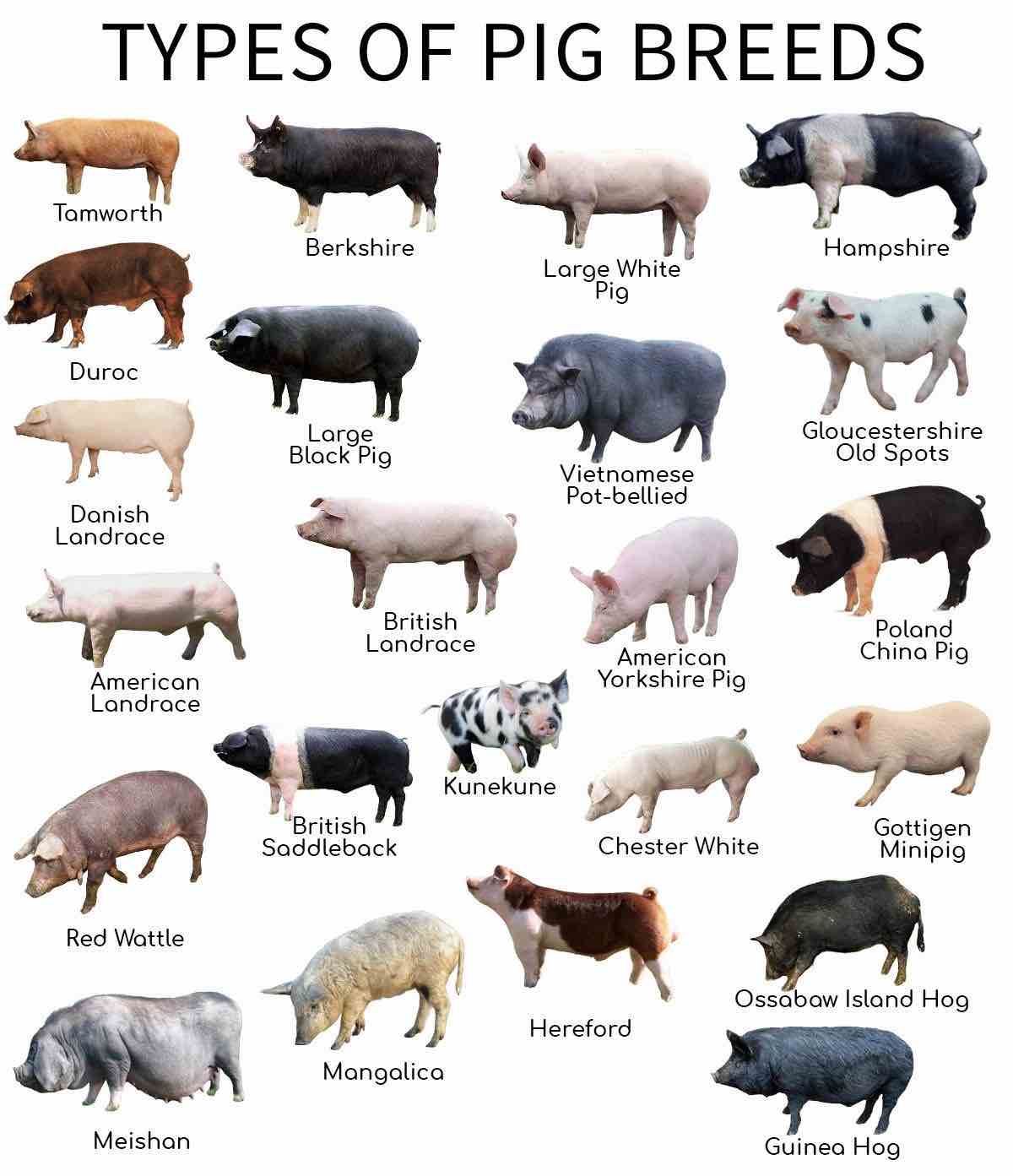Whether you’re a hobby farmer or just starting your homesteading journey, raising pigs can be a fulfilling and worthwhile pursuit.
With appropriate fencing and shelter, most pig breeds can mature rapidly, making them an ideal protein source for small farms.
To ensure success, it’s crucial to determine the best pig breed that aligns with your homestead’s unique needs and conditions.
By selecting the right breed, you can optimize meat production and enjoy a variety of delicious cuts, including bacon, ham, and pork chops, all while contributing to a sustainable and self-sufficient lifestyle.
When raising pigs, ensure their well-being by providing proper nutrition, a secure enclosure, and a comfortable shelter with outdoor space. By addressing these essentials, you’ll be well-equipped to raise healthy pigs that contribute to your homestead’s productivity.
The Best Pig Breeds for a Homestead

There are quite a lot of parameters to take into account when raising pigs. There are differences between what state your homestead is in (weather wise) and thereby what type of shelter you’d need for your pigs.
Here are some popular breeds of pigs for beginners and pig farmers on small farms.
1. Hampshire Pig
The Hampshire pig breed is one of the earliest reported pig breeds in America, bred in Kentucky.
A big benefit to raising Hampshire pigs for meat is they are ideal foragers and, overall, very hardy.
2. Tamworth Pig
Tamworth pigs are a lesser size than some of the others given. This type is frequently described as one of the bacon-producing swine breeds.
The Tamworth pig is listed as threatened by the Livestock Conservancy. It is known for being the “Bacon Pig.”
3. Hereford Pig
A Hereford Pig is a heritage breed widely available in the United States, making it a logical choice for pig breeders.
Hereford pigs’ meat is wonderful! Instead of sitting at the feeding trough all day, they run around, play, and act like other pig breeds.
4. Idaho Pasture Pigs
Homesteaders and small-scale farmers should consider rearing IPPs. The Duroc, Berkshire, and Kunekune pigs were used to create this unique breed of pig.
5. Spotted Pig
The American Spotted breed is a popular breed descended from the Gloucestershire Old Spot Pig from England. They arrived in the United States in the early 1900s.
It wasn’t until recently that the American Spotted pig gained popularity.
6. American Yorkshire Pig
The American Yorkshire breed produces flavorful meat. Yorkshires, often known as bacon breeds, have a high percentage of lean meat on the carcass and a low quantity of backfat.
American Yorkshire Pigs are a great choice for producing meat or breeding stock.
7. Landrace Pig
Landrace pigs are completely white, with only minor black skin markings permitted for registration.
The ears are lopped (similar to a wild boar), and some meaty jowls encircle the head. The breed is notable for having large litters and large size and carcass weight.
8. Chester White Pig
A Chester White is a heritage pig breed popular among pig growers for several reasons. They produce excellent mothers and live long lives.
Only small spots of color are permitted, and the color should be all white. Chester White’s ears are not upright but not fully floppy like the Large Black’s.
9. Duroc Pig
The Duroc breed of pig, which originated in America, is recognized to be a component of many commercial pork production hog crosses. They reach market weight faster.
Durocs are a lovely reddish-brown color with a pleasant attitude. Originally one of the larger market hog breeds, but now rated in the medium size range.
10. Berkshire Pig
Berkshire pigs are one of the oldest heritage breeds of hogs. The Berkshires are a popular choice for meat production and have an easygoing nature.
These heritage pig breeds are originally from the Berk area of England. It is also considered as a lard pig.
Note
Cross breeding, or heterosis, is a systematic method utilized to capitalize on the advantageous qualities of each breed.
What to consider when raising pigs
Before you begin your pig-raising adventure, keep the following points in mind:
Nutrition
To reach full capacity, a pig requires clean water and food. Other breeds are excellent foragers, but this does not imply they will not require feed.
Give your pig a variety of vegetable scraps from your garden and leftovers from your meals to increase the nutritious value of their diet.
Enclosure
Pigs are extremely intelligent, so it won’t take long to determine what the electric fence signifies and avoid it. Install it outside the fence to safeguard the pigs from predators if possible.
When you install an electric fence, you may greatly reduce the wear and tear on your physical fence.
Shelter
It is critical to construct a good barn or shed. A pig’s shelter is made up of two parts:
The first is the shelter, which will keep them safe from the elements.
The second is the ground, encircled by a good fence, allowing them to stroll and wallow.
This outdoor space is also necessary to provide your pigs with a place to defecate.
Wrapping Up
Pigs are among the best farm animals to raise and will help you become more environmentally conscious.
However, there are a few things to consider before bringing one home. Before purchasing meat animals, ensure you have everything ready and learn everything you can.
Growing many pig breeds aims to have a sustainable lifestyle and benefit from them. Your pig will provide more nutrients if it is less stressed. Give it the attention it deserves.
Frequently Asked Questions about Pig Breed for Homesteaders
The Yorkshire (which produces excellent bacon), Berkshire, and Duroc pigs are renowned for their lean flesh.
American Guinea Hogs are easy to raise if you want a lard breed. Lard pigs (American Guinea Hog, Mulefoot Pigs, or Mangalitsa Pigs) were raised for their fat for cooking and baking.
Consider nutrition, proper enclosure, and shelter for the pigs before starting your pig-raising adventure.
